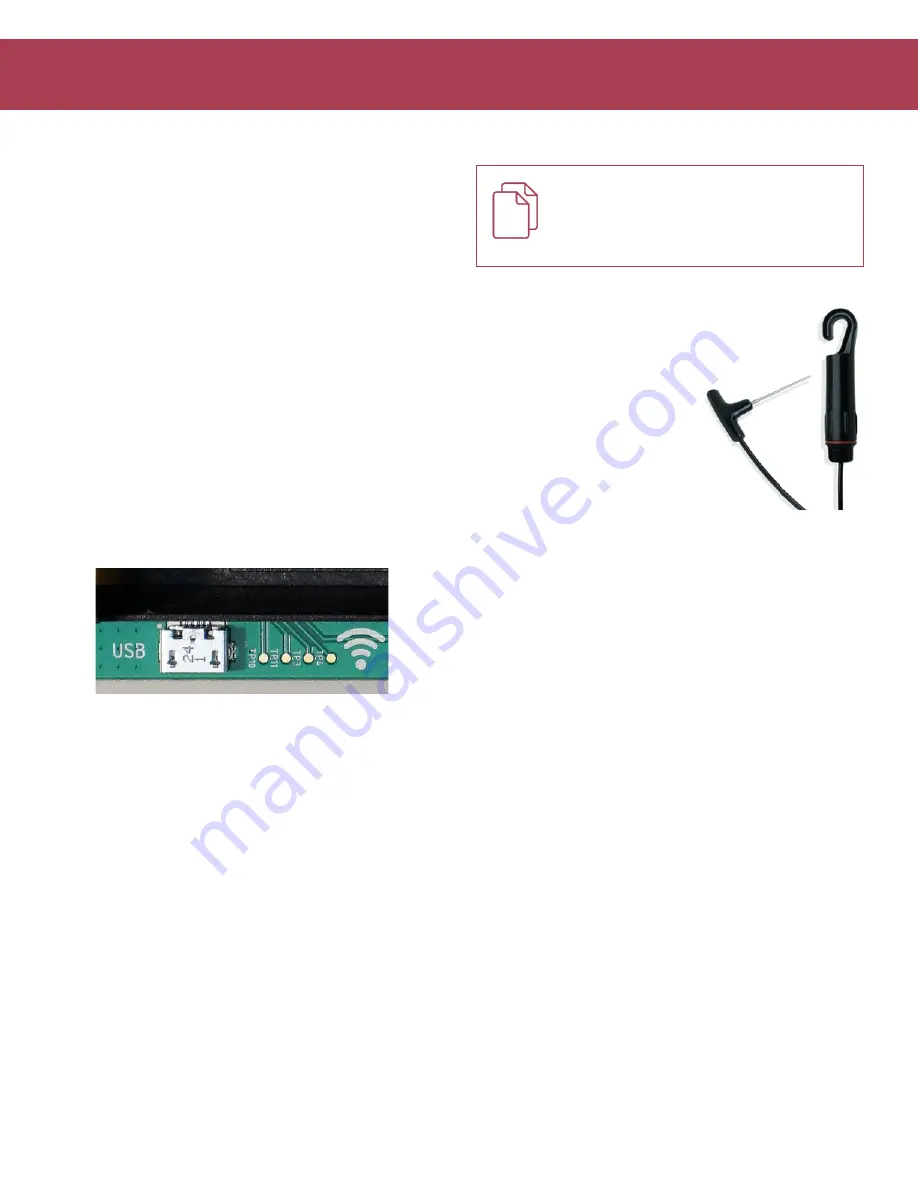
Product User Guide | 4
RFOT
ACTIVATING & DEPLOYING THE DATA LOGGER
Activating & Deploying the Data Logger
1. Connect the RFC1000 wireless transceiver (sold separately)
to the Windows PC with the provided USB cable.
2. Additional RFC1000’s can be used as repeaters to
transmit over greater distances. If transmitting over
a distance greater than 500 feet indoors, 2,000 feet
outdoors or there are walls, obstacles or corners that
need to be maneuvered around, set up additional
RFC1000’s as needed. Plug each one into an electrical
outlet in the desired locations.
3. Launch the MadgeTech 4 Software.
4. The RFOT is shipped with wireless transmission in an
active, low power state. Inserting a USB (micro B type)
cable into the RFOT enables direct USB communication
and disables wireless transmission. Direct USB
communication allows for changing the wireless
channel in the device’s Properties, if necessary.
5. When the USB cable is unplugged, wireless
transmission is enabled.
6. All active data loggers will be listed in the Device tab
within the Connected Devices panel.
7. To claim a data logger, select the desired data logger in
the list and click the
Claim
icon to pair the logger to the
RFC1000 connected to the PC.
8. Choose the start method, either
Real Time Start
to view data as it is collected, or
Custom Start
for
standalone logging to memory. By default, a report is
generated automatically when starting a logger using
Real Time Start. With Custom Start, data is recorded to
memory and can be viewed by selecting
Stop
to end
the cycle, and
Download
to retrieve the data from the
logger’s internal memory.
Mounting Instructions
For best performance, the RFOT
should always be hung by the
hook in an upright position. This
will allow for the best path for
the wireless signal.
Transmission Distance
Typical transmission distance
from an RFC1000 to an RFOT:
• Unobstructed line of sight (outdoors): 2,000 feet max
• Typical urban environment (indoors): 500 feet max
Obstacles
Obstacles will decrease the line-of-sight from an RFC1000
to another RFC1000 as well as from an RFC1000 to an
RFOT. Obstacles that interfere with or decrease the
wireless signal could include but are not limited to
smokehouse doors, freezer/refrigerator doors, building
structures such as walls and metal beams and internal
traffic such as forklifts and metal racks or carts. Additional
RFC1000’s can be placed near obstacles to lengthen and
strengthen the wireless signal.
Deflection
When a wireless signal “hits” an object such as a metal
wall, the wireless signal will not just stop but rather it
could turn a corner, bend or slow down. When installing
the RFC1000’s obstacles and possible deflection should
also be considered.
For steps to claim the data logger and view data
using MadgeTech Cloud Services, refer to the
MadgeTech Cloud Services Software Manual at









